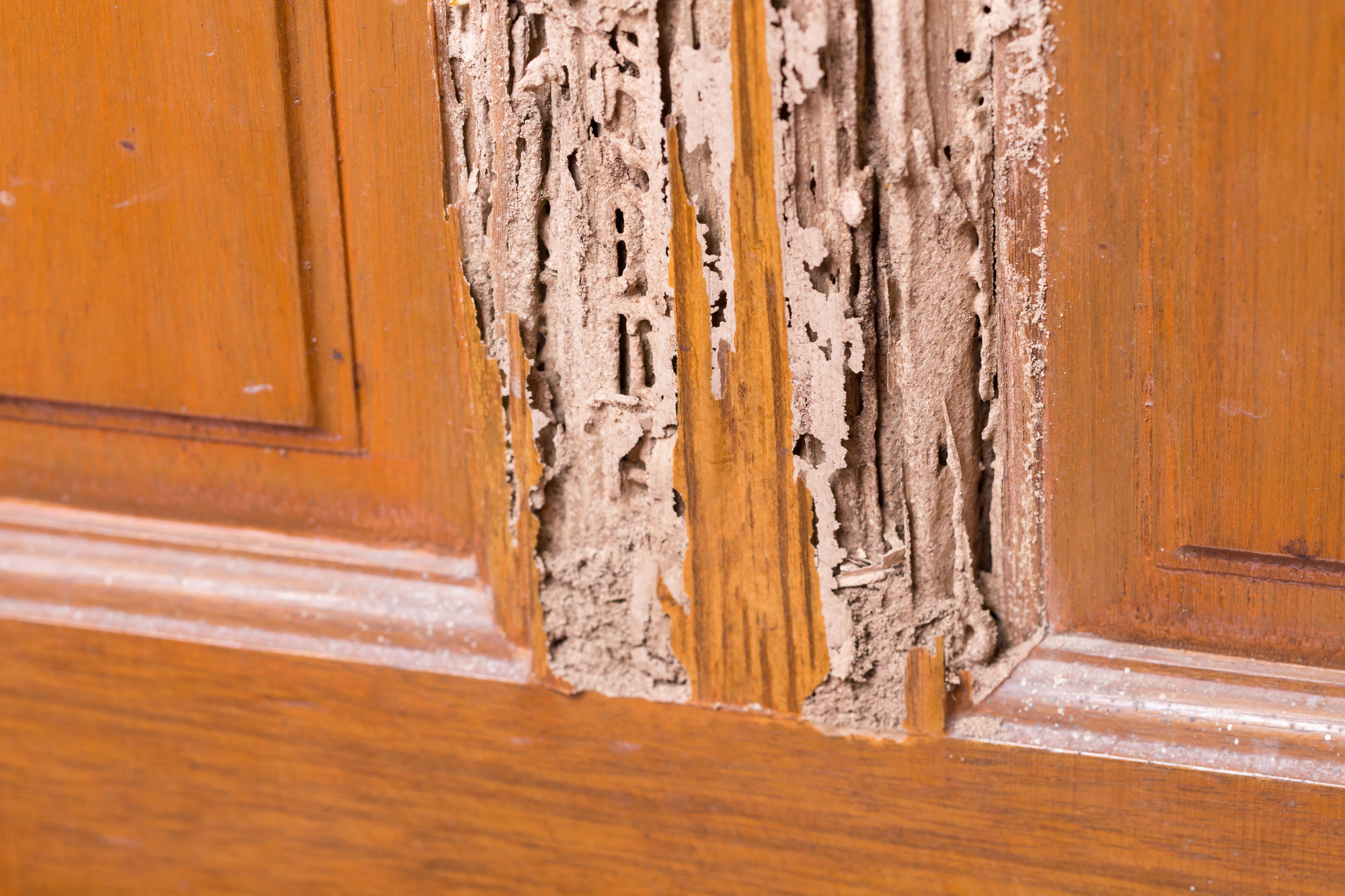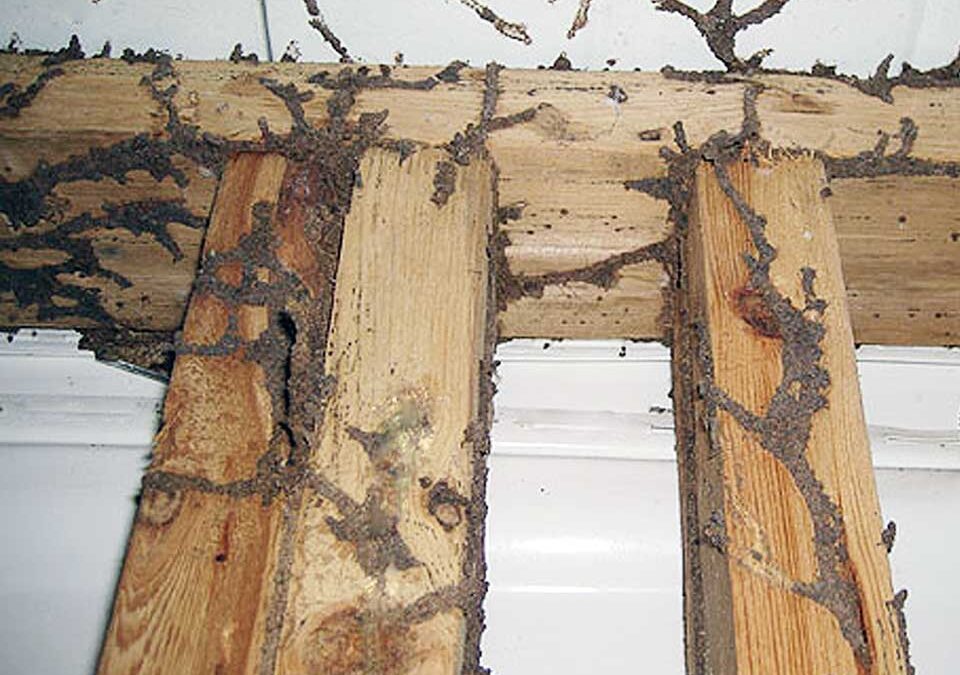Termites are silent wood destroying insects that cause billions of dollars in structural damage across the United States every year. South Central Texas faces elevated risk because warm temperatures and periodic rainfall allow subterranean colonies to remain active for much of the calendar. A single hidden infestation can weaken floor joists, window frames, and roof decking long before swarming adults become visible. Pest Control Xperts provides thorough termite removal in San Antonio backed by local knowledge, proven treatment technology, and detailed prevention guidance. Whether you manage a historic building near the Alamo, own a new craft brewery in Helotes, or oversee rental properties in Converse, our exterminator team designs a plan that protects both structures and budgets.
The Termite Climate in Bexar County
San Antonio’s position between the Gulf Coastal Plains and the Texas Hill Country shapes a climate that is ideal for subterranean termites.
- Temperature: Daytime highs climb into the nineties from May through September while winter lows rarely drop below forty for long. Soil beneath slabs remains above fifty which lets worker termites forage through every season.
- Rainfall: Spring thunderstorms soak the city, holding moisture in the heavy clay soil common east of Loop 1604. Moisture fosters fungal growth in buried cellulose that attracts termites looking for food and water.
- Irrigation: Automatic sprinklers and drip lines around River Walk hotels, suburban lawns in Stone Oak, and ballfields in Converse keep soil damp even during heat waves, extending termite foraging range toward foundations.
- Natural corridors: The Mission Reach, Salado Creek Greenway, and wooded drainage easements allow colonies to migrate freely while remaining hidden below mulch and turf.
These factors combine so that termite activity rarely pauses. Homeowners may see swarms as early as February after a warm spell or as late as October following heavy rains left by tropical storms moving inland from the Gulf.

Subterranean Termites Common to San Antonio
Species | Key Traits | Local Hotspots | Damage Speed |
Eastern subterranean termite | Lives entirely underground in colonies that exceed 50000 workers. Builds pencil wide mud tubes on foundation walls. | Older neighborhoods like Monticello Park where crawl space vents supply moisture. | Moderate. Visible damage can appear in three to five years. |
Formosan subterranean termite | Aggressive invader with colonies that can contain millions. Swarms at dusk from May to June. | Downtown riverfront properties, large commercial campuses where decorative lighting attracts swarmers. | High. Structural weakening possible within two years. |
Arid land subterranean termite | Smaller colonies adapted to drier soils on the northwestern edge toward Helotes. | Hill Country rock homes where limestone terrain drains quickly. | Slower but spreads horizontally, hollowing porch posts and deck joists. |
Drywood termites appear occasionally in furniture shipped from coastal counties, yet subterranean species cause the vast majority of damage in Bexar County.
Warning Signs that Call for Immediate Inspection
- Discarded wings on windowsills, beneath porch lights, or at baseboards indicate a recent swarm indoors.
- Mud tubes rising along slab walls, plumbing penetrations, or pier supports reveal worker highways between soil and wood.
- Hollow sounding wood when tapped suggests galleries inside studs or subfloor.
- Bubbling paint or blistered drywall points to moisture behind the surface due to hidden tunnels.
- Sagging floors or stuck doors often result from internal framing weakened by colony expansion.
Because termites eat from the inside outward, visible cues appear late in the infestation cycle. A professional inspection by Pest Control Xperts confirms activity levels, identifies species, and pinpoints structural vulnerabilities before repairs escalate.

Our Termite Removal Process
1. Comprehensive Property Assessment
- Using moisture meters, infrared imaging, and visual probing tools, technicians examine slab edges, crawl spaces, baseboard seams, and attic beams.
- Findings are documented with high resolution photos and measurement notes, then summarized in a digital report for owners, builders, or real estate agents.
2. Species Identification and Risk Mapping
- Collected workers, soldiers, or swarmers are inspected under magnification to confirm species.
- Mapping software overlays soil type, irrigation patterns, foundation style, and landscaping to prioritize treatment zones such as planter boxes that abut siding or weep holes with unprotected gaps.
3. Tailored Treatment Options
- Non repellent liquid barrier: A modern termiticide is trenched into soil around the foundation and injected beneath patios where concrete meets grade. Termites pass through the treated zone, share the active ingredient, and the colony collapses.
- In ground baiting system: Low profile stations are set every ten feet around the perimeter when extensive hardscaping, historical preservation codes, or Hill Country limestone make trenching impractical. Workers feed on cellulose bait laced with an insect growth inhibitor, then transfer the inhibitor through trophallaxis to eliminate queens and supplemental reproductives.
- Foam application: Wall voids displaying live tubes receive low expansion foam that carries the same non repellent into inaccessible galleries without cutting drywall.
- Spot wood treatment: Borate solutions penetrate raw lumber in garages or attic additions where minor infestations have been caught early.
4. Moisture and Structural Corrections
- Downspout extensions reinstall to divert roof runoff beyond flower beds.
- Soil and mulch are raked back at least six inches from siding to reduce direct wood contact.
- Foundation cracks are sealed with epoxy filler to block hidden termite pathways.
- Owners receive an easy to read checklist covering landscape changes, sprinkler adjustments, and annual gutter cleaning to keep moisture distant from slab edges.
5. Follow Up Monitoring
- Liquid barriers are inspected annually for soil disturbance from plumbing work or erosion.
- Bait station inserts are checked every ninety days at first, then moved to semiannual visits once activity remains absent for one full year.
- Digital service logs note wood moisture readings, any fresh swarm evidence, and updated prevention recommendations specific to upcoming seasons.
Special Considerations for Converse and Helotes
Converse
Neighborhoods near Randolph Air Force Base often feature single story slab homes with minimal crawl access. Many have landscape timber borders directly against the foundation after quick move in landscaping. Pest Control Xperts recommends swapping wood edging for stone and installs termite bait stations flush to narrow pathways between homes where trenching equipment cannot fit.
Helotes
Hill Country terrain promotes slab on grade construction with rock veneer. Limestone is porous, hiding small cracks that shelter termites. Formosan colonies have been documented in gated communities perched above Highway 16. Our team employs foam injections along interior rock fireplace surrounds and baxter style baits engineered for rocky soils to protect panoramic deck supports and cedar pergolas.

Why Choose Pest Control Xperts
- Local Expertise – We monitor swarm seasons tied to Gulf moisture surges, track city permits for new builds that disturb soil, and understand how Edwards Aquifer recharge zones influence moisture around slabs.
- Integrated Solutions – By offering both barrier and bait strategies plus structural moisture management, we create layered defense rather than a single line easily disrupted by renovation.
- Transparent Reporting – Digital maps, photos, and ongoing records satisfy mortgage lender requirements and help owners track maintenance tasks.
- Flexible Scheduling – Evening, weekend, and builder phase‑specific appointments keep home sales on track and commercial renovations moving.
- Safety and Stewardship – All termiticides are selected for low odor, minimal environmental impact, and compatibility with San Antonio River watershed protection guidelines.
Tips to Reduce Termite Risk Year After Year
- Keep mulch thickness under two inches and pull it six inches back from siding.
- Repair leaky hose bibs and air conditioning condensate lines immediately to dry soil near the foundation.
- Store firewood on a metal rack at least eighteen inches above ground and twenty feet from exterior walls.
- Trim shrubbery so branches never touch stucco or rock veneer, allowing sunlight and airflow.
- Use foundation vents with insect‑screening mesh and confirm they remain unobstructed.
- Conduct a springtime self inspection of window sills and baseboards for new wings or mud spotting.
- Schedule professional termite evaluations every two to three years if no plan is in place and annually if your neighborhood has documented swarm activity.
- When remodeling, ask contractors to keep form boards and scrap lumber off soil and to remove them promptly after concrete cures.
- Update landscape grading so water drains away from your structure instead of pooling beside patios.
- Share termite awareness with neighbors. A single untreated colony can span multiple yards under shared fences.
Following these guidelines alongside a monitoring agreement with Pest Control Xperts keeps your property ahead of the termite curve.
The Cost of Delay
Statistics show that termites damage more homes annually than fires, storms, and earthquakes combined. Insurance carriers typically exclude insect damage from standard policies. Repairing structural beams, replacing subfloor, and fumigating wall voids after a long undetected infestation can run into tens of thousands of dollars. Early professional treatment, by contrast, is a fraction of the cost and comes with peace of mind.
Historic adobe and limestone structures near the Alamo Mission, high traffic hotels adjacent to the River Walk, and modern medical offices in the South Texas Medical Center all share one truth: proactive termite protection is far less expensive than remedial reconstruction.
Contact Pest Control Xperts Today
Every hour that termites feed inside wood framing is an hour closer to costly repairs. Pest Control Xperts stands ready with prompt inspections, customized termite treatment, and maintenance plans tailored to San Antonio’s climate. Our exterminator team serves everything from downtown loft conversions to hill country acreage in Helotes and rapid move in housing developments in Converse. Contact us today for a consultation, digital inspection report, and clear plan of action that keeps your largest investment solid and secure.
